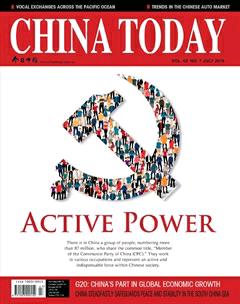Set China-U.S.Relations on Track via Dialogue and Consultation
As the international community agonized over rising tensions in the South China Sea, the eighth round of the China-U.S. Strategic and Economic Dialogues (S&ED) and the seventh round of the China-U.S. High-Level Consultation on People-to-People Exchange (CPE) took place as scheduled in Beijing. The events clarified recent uncertainties in Sino-U.S. relations. A series of major achievements made mutually beneficial cooperation and joint development once more the underlying theme of bilateral ties. Outcomes of regional and global dialogues also embodied the deepening profundity of China-U.S. relations which will bring benefits to the two countries as well as the world.
“China and the U.S. should strengthen mutual trust,” Chinese President Xi Jinping said at the joint opening ceremony of the S&ED and CPE, “the vast Pacific should be a big platform for inclusive cooperation, not an arena for competition.” U.S. President Barack Obama sent a written address to the opening ceremony. In it he said that over the past seven years the U.S. and China have jointly tackled major global challenges, including world economic recovery, climate change, epidemics, and security issues in Iran, North Korea, and Afghanistan. Both sides have realized that as long as they solve problems sincerely and jointly, bilateral ties will strengthen.
China is the worlds most important developing country, and the U.S. is the worlds most developed country. Although conflicts and challenges will inevitably appear, the dialogue mechanism will solve problems and maintain healthy and stable bilateral relations, wherein cooperation will gradually supersede divergences.
At the eighth round of the S&ED, both sides agreed to reach a win-win bilateral investment agreement in the quickest time possible, and to strengthen cooperation on RMB trading and clearing in the U.S. China moreover agreed to extend a RMB 250 billion Qualified Foreign Institutional Investor (RQFII) quota to the U.S. The two sides had thorough exchanges and communications on macroeconomic policy, the global economic situation, and the risks and challenges they face. The two countries committed to deeper cooperation on climate change, energy, and environment issues, to an expanded dialogue and collaboration on anti-terrorism, the Internet, judicial enforcement, anticorruption, customs, health, aviation, and marine protection, as well as peacekeeping. The strategic dialogue achieved some 120 substantial outcomes. On the issue of the South China Sea, both sides supported comprehensive and effective implementation of the Declaration on the Code of Conduct on the South China Sea. They also agreed to beef up communication on Asia-Pacific affairs and to deepen coordination under the framework of the regional multilateral mechanism, so playing a greater role in promoting Asia-Pacific peace, stability, and prosperity. Meanwhile, the two sides are willing to maintain close communication, coordination, and cooperation on security issues on the Korean Peninsula, and in Iran, Syria, and Afghanistan.
With regard to ecological protection, this round of S&ED implemented the pledge to combat wildlife trafficking. Last September, leaders of both countries recognized the urgent need to crack down on this illegal trade, and committed their countries to positive measures that address this global challenge. So far, the two nations have conducted three sets of negotiations on combating wildlife trafficking. It is such timely and harmonious communications that help the two sides adopt practical and effective measures to ban the illegal ivory trade. These are widely commended in the international community.
The seventh round of CPE also gained abundant achievements. The two sides signed 12 cooperation agreements on 158 items in seven fields, namely, education, science and technology, culture, sports, public health and women and youth affairs. In six years the number of Chinese students studying in the U.S. has doubled, and the number of Chinese tourists visiting the U.S. has quadrupled. Having completed its “100,000 Strong” Initiative ahead of schedule, the U.S. has launched the even more ambitious “One Million Strong” Initiative, with the goal of raising the number of U.S. students of Mandarin Chinese to one million by 2020. There are 399 institutions and education collaboration programs between the two sides. Joint research centers on clean energy, rail transportation, and other fields, as well as cross-border innovation and entrepreneurship cooperation platforms, have achieved smooth operation. Dialogues between think-tanks are also highly productive. Almost 2,000 people have signed up for around 500 China-U.S. Young Maker Competition programs, so reflecting the vibrant spirit of innovation and entrepreneurship. Since 2015, there have been more than 1,340 U.S. commercial performances in China. The success of current bilateral people-to-people and cultural exchanges has not only removed ambiguities but also enhanced mutual understanding.
All this shows that as long as they enhance mutual trust, China and the U.S. will enjoy smooth and fruitful relations.

